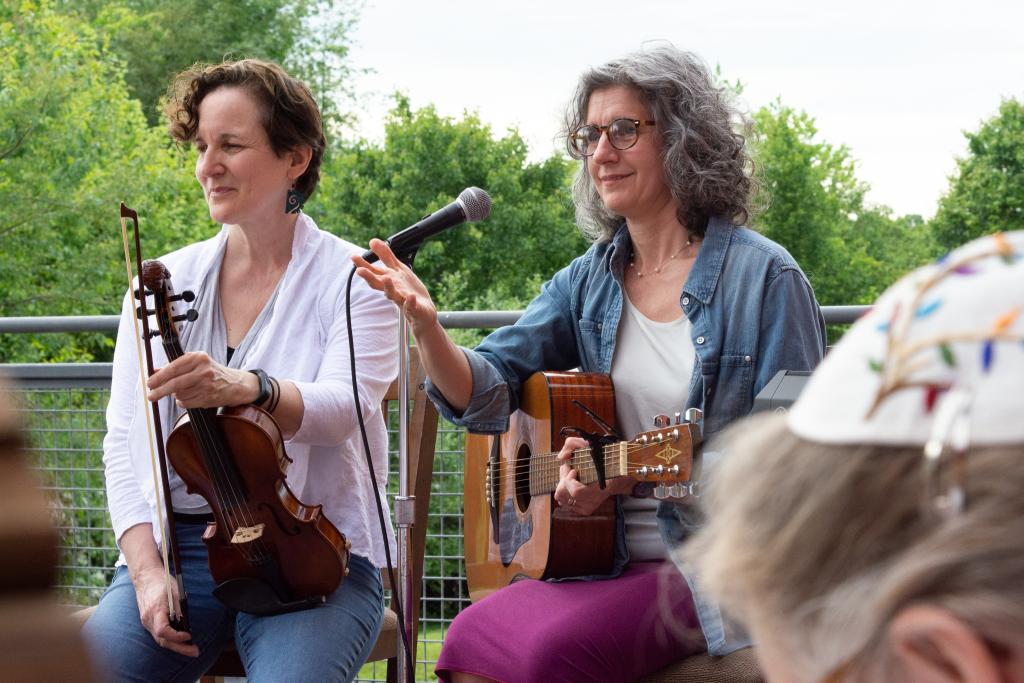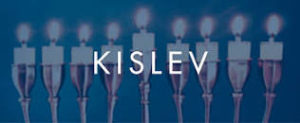

Thoughts on Kislev
The Sages taught in a baraita: It is a mitzvah to place the Chanukah lamp at the entrance to one’s house on the outside, so that all can see it. If he lived upstairs, he places it at the window adjacent to the public domain. And in a time of danger, he places it on the table and that is sufficient to fulfill his obligation.
Babylonian Talmud Tractate Shabbat 21:b.
Many are familiar with the unusual history of how Chanukah entered the Jewish calendar: as a delayed Sukkot. At the time of Sukkot, in the 2nd century BCE (approximately 160-167 BCE) Jews could not fulfill the mitzvah of visiting the Temple to bring the required sacrifices because the Temple had been desecrated by the Ancient Greek Seleucid army. Filled with idols – the worst kind of blasphemy in Jewish tradition – the Temple could not be used for its intended purpose. Once the Maccabean fighters gained control of the Temple, the custom was established to observe an 8-day festival as a kind of “make up” for the earlier festival that was missed. The part about the oil and miracles was added later when Jewish Sages sought to deemphasize the story of Jewish military victory, for fear that the story would arouse suspicion among the Roman authorities of their own time.
But the story of Chanukah indeed begins with Sukkot, and in particular, with the mitzvah of הראיון har’ayon, meaning showing yourself, presenting yourself, at the Temple at the appointed times – Pesach, Shavuot and Sukkot. This mitzvah is among a select few highlighted by Sages in the Talmud as equal to the study of Torah. That’s how important it was to them.
In our time, we no longer hope for the resurrection of the Temple or its ritual practices, but we still tune ourselves to the inner values of those ancient rites. The mitzvah of har’ayon still stands, though in a transvalued form. The original meaning of this mitzvah was directed at our ancestors’ understanding of G-d in their lives, to ‘present’ themselves before their Creator. We no longer seek to present ourselves to offer sacrifices as our ancestors did, but we do want to “show up” and “present ourselves” by voicing our values. For many, the theological context is still personally relevant and meaningful; for others who engage in Jewish life on a more secular level, this mitzvah still resonates. In a democracy, there are many ways to ‘represent’ through civic engagement, and we value that as its own spiritual practice. But our ancestors also gave us a simple tool for performing the mitzvah of har’ayon in our time with Chanukah candle lighting. It is outlined in the quote above, from the Babylonian Talmud, and known to us as pirsuma nisa, the mitzvah of “announcing the miracle” of Chanukah by placing our lit candles in public view. (In ancient Israel, and the early diaspora in Rome, the custom was to put your Chanukiyah outside your door. Here is the Western Hemisphere, outdoor candles in December don’t last too long, so the window is more practical.)
The teaching above notes that in times of danger – meaning, increased hatred against Jews – one is allowed to keep the chanukiyah inside to avoid provoking trouble. This is a practical instruction and we certainly don’t want to provoke trouble. And, we should make no mistake: this is a time of danger for Jews and more so for other minorities. But in our time of sharply increased anti-Semitism, as part of a larger rise in all kinds of ethnic, racial, religious and social hatred, the importance of the mitzvah of har’ayon may be even more important in guiding where we place our chanukiyot. The lit flames of the Chanukah menorah have always symbolized strength in the face of hatred and intolerance. We need this symbol now more than ever.
On this Chanukah, let our candles burn brightly in full view, and may they symbolize both our commitment to show up as Jewish people, presenting ourselves without fear, and without malice and our commitment to support our Jewish and American belief that “all [people] are created equal . . . With inalienable rights: life, liberty and the pursuit of happiness” and stand against senseless hatred of any kind.
The first candle of Chanukah 5780 will be lit on Sunday night, December 22. The festival blessings follow below.
Chag Urim Sameach,
Rabbi Hazzan Rachel Hersh

Festival Blessings
ֵר ֲחנֻ ָכּה
ָבּרוּ? ַא ָתּה ֲאדֹנָי ֱא@ ֵהינוּ ֶמ ֶל? ָהעוֹ ָלם ֲא ֶשׁר ִק ְדּ ָשׁנוּ ְבּ ִמ ְצוֹ ָתיו וְ ִצָוּנוּ ְל ַה ְד ִליק נ
Ba-ruch A-tah Ado-nai E-lo-he-nu Me-lech ha-olam a-sher ki-de-sha-nu be-mitz-vo-tav ve-tzi-vanu le-had-lik ner shel Cha-nu-kah.
Blessed are You, Adonai our God, Sovereign of all, who hallows us with mitzvot, commanding us
to kindle the Hanukkah lights.
ִ ִסּים ַל ֲאבוֹ ֵתינוּ ַבּיָּ ִמים ָה ֵהם ִבּ ְזּ ַמן ַה ֶזּה
ָבּרוּ? ַא ָתּה ֲאדֹנָי ֱא@ ֵהינוּ ֶמ ֶל? ָהעוֹ ָלם ֶשׁ ָע ָשׂה נ
Ba-ruch A-tah Ado-nai E-lo-he-nu Me-lech Ha-olam she-a-sa ni-sim la-avo-te-nu ba-ya-mim hahem bi-zman ha-zeh.
Blessed are You, Adonai our God, Sovereign of all, who performed wonderous deeds for our
ancestors in days of old at this season.
First Night Only
ָבּרוּ? ַא ָתּה ֲאדֹנָי ֱא@ ֵהינוּ ֶמ ֶל? ָהעוֹ ָלם ֶשׁ ֶה ֱחיָנוּ וְ ִקיְּ ָמנוּ וְ ִה ִגּי ָענוּ ִל ְזּ ַמן ַה ֶזּה
Ba-ruch A-tah Ado-nai E-lo-he-nu Me-lech Ha-olam she-heche-ya-nu ve-ki-yi-ma-nu ve-higi-a-nu
liz-man ha-zeh.
Blessed are You, Adonai our God, Sovereign of all, who has kept us alive, sustained us, and
brought us to this season.
Copyright © 2024 Adat Shalom Reconstructionist Congregation. All rights reserved.